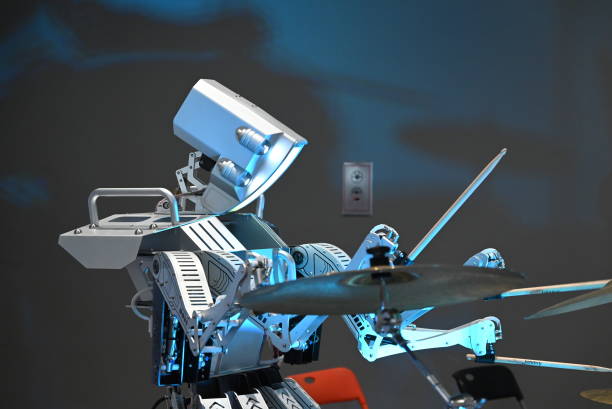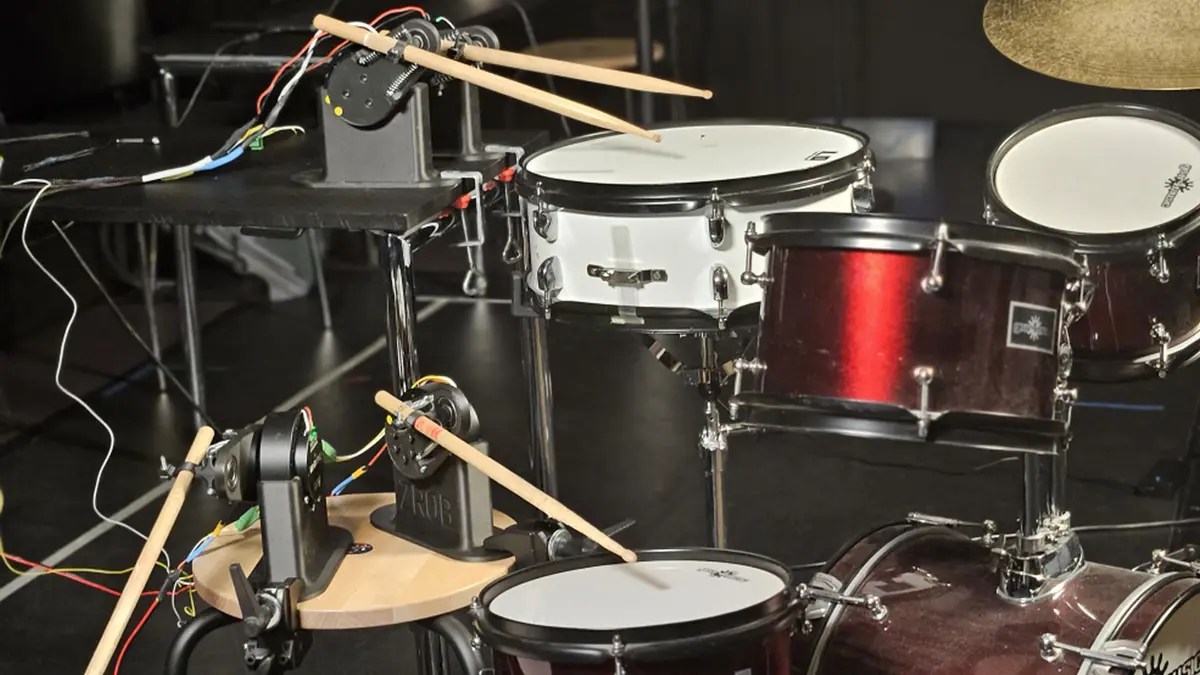The researchers from the University of Oslo have developed a new robot drummer that can create new rhythms and play drums faster than a human. Called the ZRob, the new robot could open doors for new musical applications and offer new insights for future developments in robotics in general.
Developed by Mojtaba Karbasi, the drumming robot as part of his doctoral thesis at the RITMO Centre for Interdisciplinary Studies in Rhythm, Time, and Motion, University of Oslo. “Playing together, the robots will find a pattern unlike everything else,” Mojtaba Karbasi says.

ZRob’s development was inspired by humans’ seemingly relative ease in performing complex actions. For example, as Karbasi explains, we can estimate the weight of a glass of water and lift it without spilling it.
ZRob is not the first robot drummer we’ve seen recently (take CyberOne, for example), but it is certainly a step up in terms of dexterity and potential.
Jensenius goes on to explain that he believes that robots must become multimodal in the future. This means, in practice, they will need to have more senses if they are to become fully operational with human beings. With this in mind, Karbasi developed his drumming bio-inspired robot and accompanying AI model.
The robot’s special flexible grip mimics the human wrist, and it integrates artificial intelligence (AI) to help it learn and optimize movements. ZRob can work as a standalone unit to perform a single drum stick action or as a team to perform complex drum compositions.
One aspect that makes ZRob seem more human is his arm. Two springs, one on each side, provide the arm with some degree of wrist flexibility. These springs, combined with the AI, allow the robot to be adaptable—an essential feature for hitting a drumhead while in motion.
ZRob also has some rudimentary senses and can listen while also “sensing” where its arm is at any one time. Karbasi explains that the springs in the different versions of ZRob are of varying sizes. The AI helps each robot find its behavior.
“If a robot is trying to play a double stroke, it wants to find the right action parameters to execute it. If you change the springs, the behavior will change, too. The robotic body thus helps to shape the behavior,” Karbasi added.
When multiple robots play at the same time, you might hear rhythms that humans are unable to produce. “Different physical characteristics completely shape the output. It is like a piano piece played by forty fingers – unpredictable, and it is hard for humans to imagine how it was produced,” Karbasi explained.
“We are not trying to copy a human, but rather to take the human body as a starting point. Musical robotics is a controlled way of working with this. It does not have potentially dangerous consequences,” Jensenius explained.
Karbasi believes that robot-created music cannot resonate like human-played music, but he thinks his robots can inspire musicians.
“A robot that precisely mimics human behavior is not inspiring. Then humans could do the same, even better. However, if we manage to create robots that take some humanity into them but are unique in their way, it inspires to a much greater extent,” Karbasi says.
